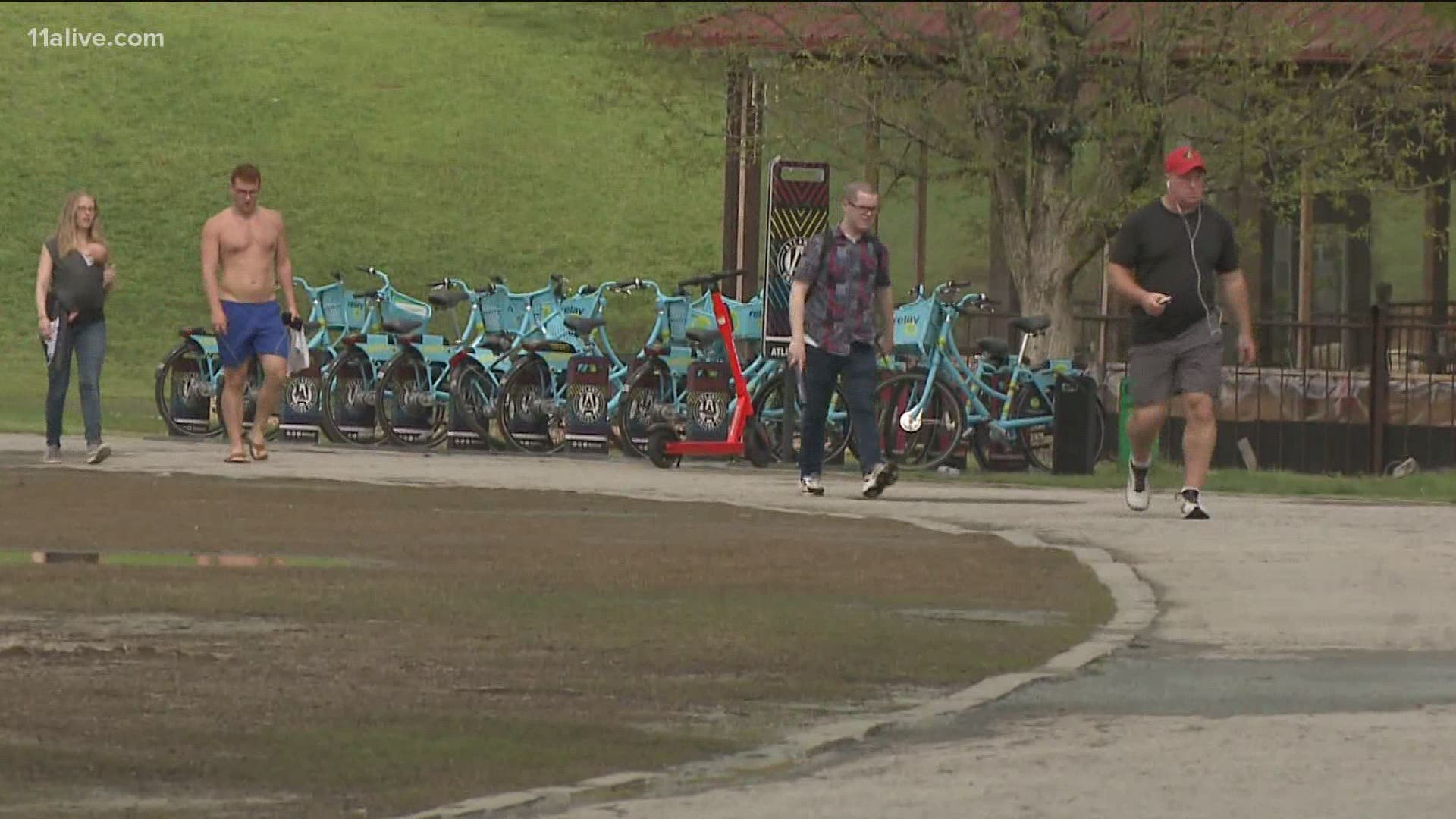ATLANTA — On Wednesday morning, Atlanta Mayor Keisha Lance Bottoms announced the city was ready to move to Phase 2 of her five-phase reopening plan, easing some of the recommended restrictions the mayor is asking city residents and businesses to follow.
The second phase of the plan takes modest steps to restore normal activity in the city, such as allowing small, private gatherings of fewer than 10 people and curbside pickup service at restaurants and retail stores.
The mayor's plan is not strictly legally enforceable, where it goes beyond Gov. Brian Kemp's orders - which have removed restrictions on leaving the home for most individuals and allowed restaurants to open for in-person dining, for instance.
But the mayor has said she would use her platform as mayor to encourage stricter observance of COVID-19 precautions, and her phased reopening plan is the most clear expression of that.
Here's what's new with Phase 2, how we get to Phase 3, and what it will mean when we get there:
- Atlanta's coronavirus cases, hospitalizations and positive test percentages are all declining: These were the mayor's criteria for moving from Phase 1 to Phase 2. According to data released by the city, hospitalizations are on a 25-day downward trend, positive percentages are down for 21 straight days, and this week new COVID-19 cases (based on the daily 7-day rolling average) reached 15 straight days of trending downward, triggering the step to Phase 2. Additionally, hospital and critical care bed availability have both remained solidly above the 50% threshold required by the mayor, hovering around 75%.
- What's different between Phase 1 and Phase 2: There's really only two new significant recommendations in taking the next step - 1) small, private gatherings of no more than 10 people (with social distancing) are permitted, where they weren't before; and 2) it now allows curbside pickup at restaurants and retail stores.
- How to get to Phase 3: The mayor sets a strong standard for testing and tracing in order to move to the third phase from here. Bottoms lays out guidelines for the city that include reaching capacity to conduct 90 diagnostic tests for every 1,000 residents per month and having at least 15 contact tracers for every 100,000 residents. The city says it will begin publishing progress reports on those data points on the ATLstrong.org website.
- What we can look forward to in Phase 3: At that point, the mayor's guidelines see it acceptable to have "limited trips outside" (excepting for vulnerable populations that should continue to stay home) and "limited occupancy in food and retail establishments" (to the extent they can while maintaining social distance. This phase also allows for some people to return to office work and for small public gatherings. Perhaps the most significant element of it, though, would be the city beginning to accept some special event applications again.
11Alive is focusing our news coverage on the facts and not the fear around the virus. We want to keep you informed about the latest developments while ensuring that we deliver confirmed, factual information.
We will track the most important coronavirus elements relating to Georgia on this page. Refresh often for new information.
MORE CORONAVIRUS HEADLINES

